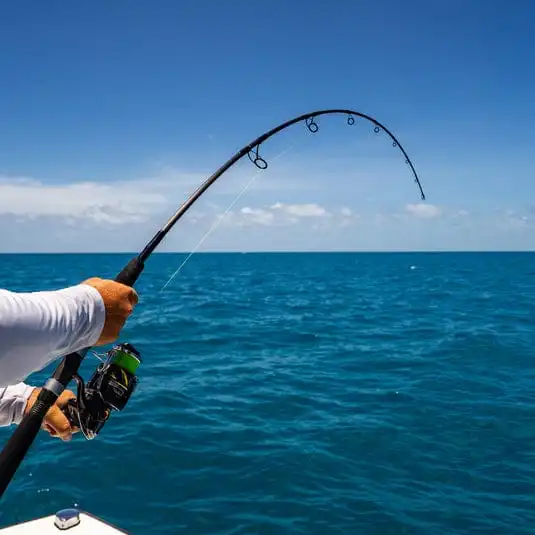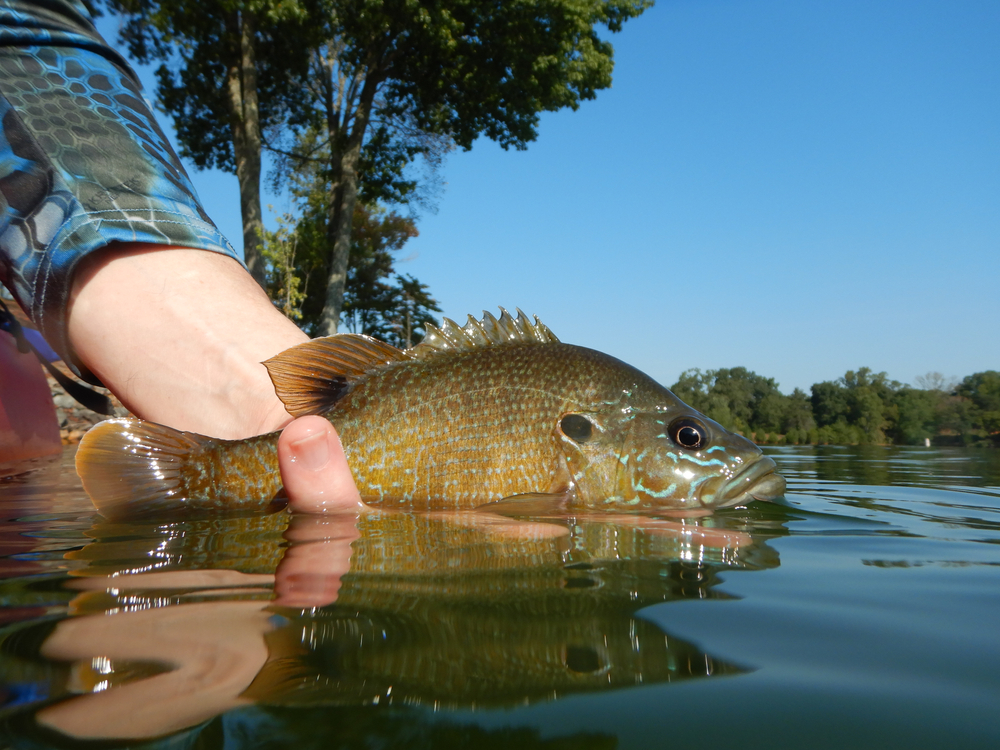If you want to have a challenging and fun activity for winter, nothing can be better than ice fishing! Undoubtedly, ice fishing is a great way to enjoy the outdoors in winter and target more species.
In today’s guide, we will explain everything to beginners who want to know about ice fishing. You will get the main tips and tricks, as well as the best gear to use for ice fishing. We’ll also talk about staying safe and having fun while ice fishing.
Table of Contents
ToggleSome basic information you should know before ice fishing:
Ice thickness:
When you want to go ice fishing, you must ensure the ice is thick and strong. If it’s only one or two inches thick, it’s unsafe, and you could fall into the water! It should be at least more than 4 inches thick (that’s about 10.16 centimeters). Moreover, if you want to use a snowmobile or ATV on the ice, it must be even thicker – more than 10 inches (about 25.4 centimeters).
If you plan to drive a car or a small truck on the ice, the ice should be at least 12 inches thick (about 30.48 centimeters). All and all, always be cautious and check the ice thickness to stay safe.

Ice on the east vs. ice on the north side:
It is another important thing to consider while going on ice fishing: the ice on the north side of a lake is usually thicker because it gets less sunlight (in the northern hemisphere). But in the southern hemisphere, it’s the opposite – the south side of the lake might have thicker ice because it gets less sun. So, where you are in the world makes a difference in how you judge the ice.
Above, we have described most of the important notes you must know while going on ice fishing. More, there are some essential gears that experts advise one should keep with them while going on ice fishing.
Essential gears for ice fishing:
Jigging Rod:
A jigging rod is a specialized ice fishing rod designed for vertical jigging, a popular ice fishing technique. It’s shorter than typical fishing rods, usually around 24-36 inches, which makes it easier to manage in tight spaces within an ice shanty. These rods are highly sensitive, allowing you to feel even the subtlest nibbles from fish below the ice. Pair your jigging rod with an ice fishing reel, and you’ll be ready to catch various fish species during your ice fishing adventures.
Tip-ups:
Tip-ups are ingenious devices used by ice anglers to detect fish bites passively. They consist of a spool of lines, a flag, and a trigger mechanism. You drill a hole in the ice, set your baited line on the spool, and position the flag above the hole. When a fish bites and pulls on the line, the flag tips up, signaling it’s time to check your line and reel in your catch. Tip-ups allow you to fish multiple holes simultaneously, increasing your chances of success on the ice.
Spike:
A spike, often called an ice anchor, is a simple yet essential tool for ice fishing. It’s a sturdy metal or plastic stake with a pointed end. You use it to anchor your fishing rod or tip up in the hole you’ve drilled in the ice. Inserting the spike into the ice prevents your equipment from slipping into the hole and ensures it stays securely in place, even during windy conditions. This helps maintain a stable and organized fishing setup while you wait for the fish to bite.
Fish-finder:
Fish-finder is a sophisticated electronic device that helps you locate fish under the ice. It shows you where they are so you can position yourself better. It greatly enhances your ice fishing experience. It uses sonar technology to provide real-time information about what’s happening beneath the ice.
Shanty:
Here are some tips for where to go ice fishing:
Recommended places:Lakes with lots of perch, crappie, and trout are great spots to try. These fish are often found in such places during winter.
Look for deeper than 10-foot ponds because they usually have more fish under the ice.
Check out lakes or ponds that host ice fishing tournaments, sometimes called “derbys.” These are usually good places to catch fish. You can also ask people at local bait shops where they’ve been successful ice fishing.
Places to avoid:
Stay away from rivers and streams for ice fishing. It’s not safe because the ice there might not be strong enough.
Stay away from lakes or ponds known to have warm water coming in from springs. This warmth can make the ice weaker and less safe.




